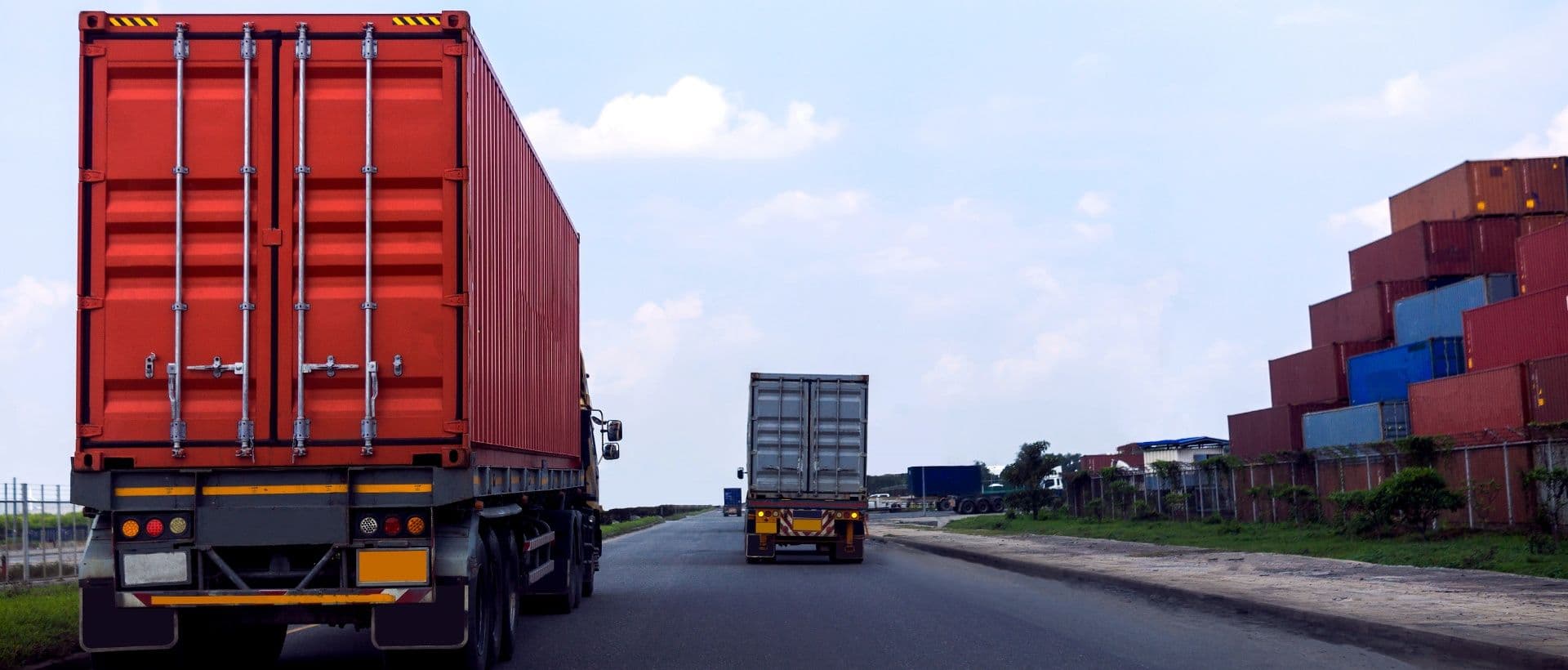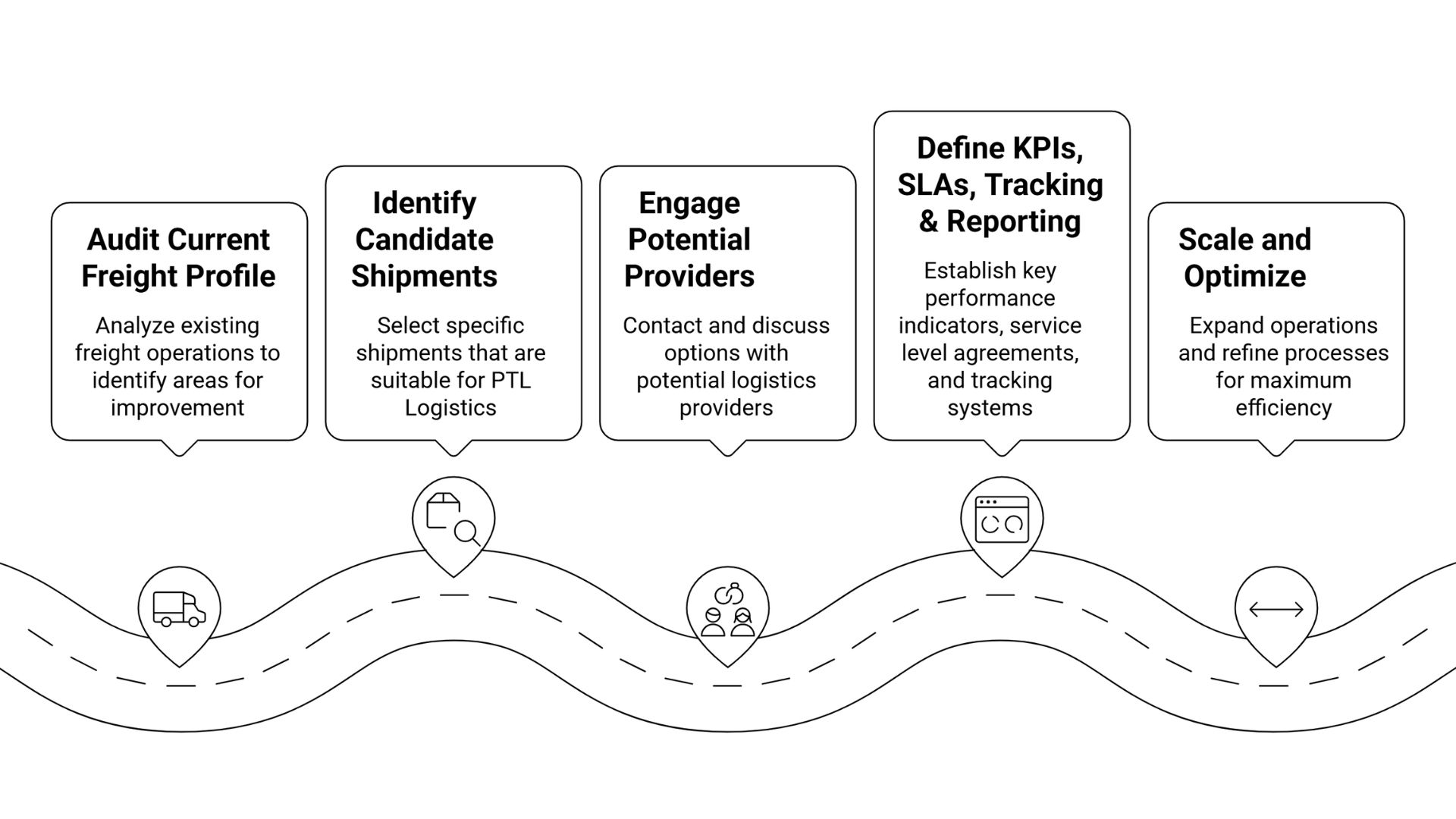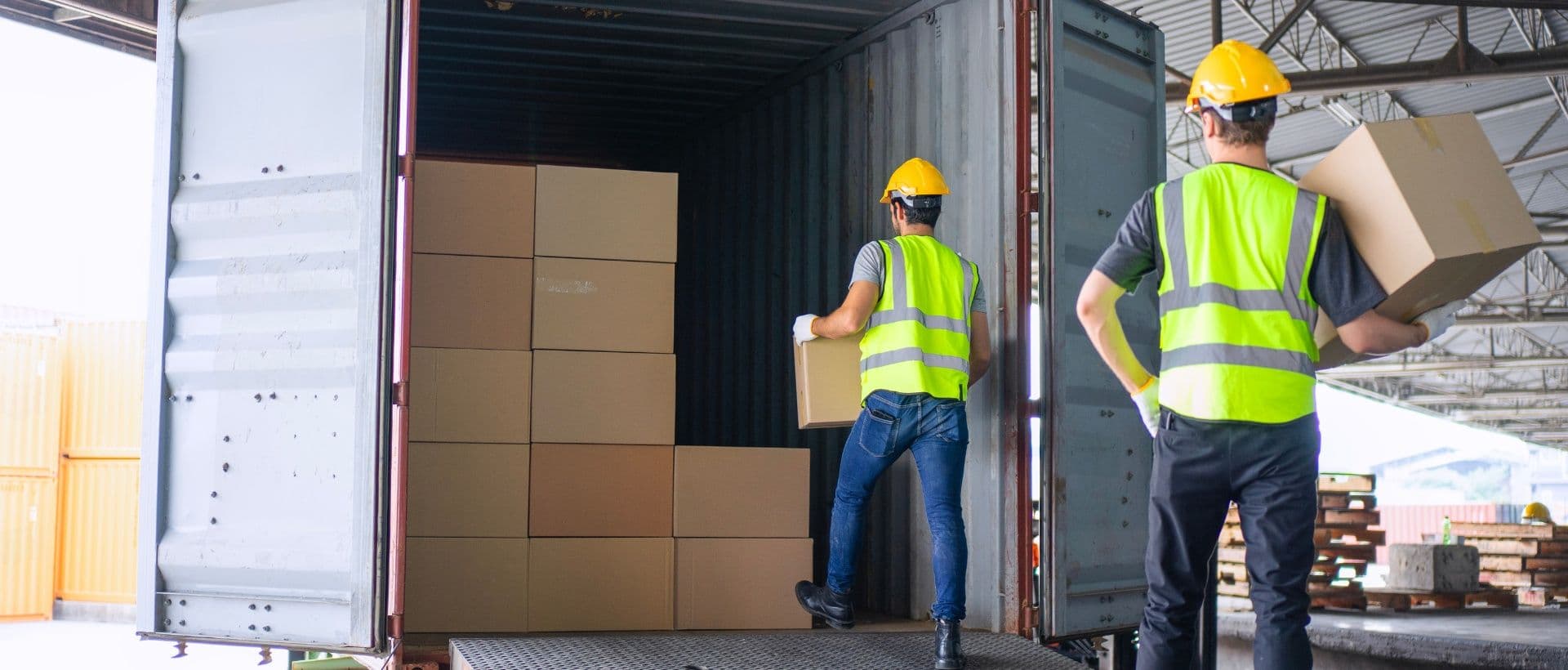
PTL Logistics: The Backbone of India's Growing B2B Transportation Network
November 07, 2025
AAJ Swift

In a fast-paced logistics world, speed and controlling costs are crucial. PTL Logistics, an innovative solution in the modern world, assists companies when it comes to transporting goods. PTL, also known as Part Truckload Logistics, is perfect for shippers who don't have a full truckload of goods. It offers more flexibility and cost savings compared to other transport services. PTL Logistics Services provides a significant strategic advantage for businesses of all sizes. This is especially true for those who are focused on making the supply chain more efficient and cost-effective.
What is PTL Logistics?
PTL is short for Part Truckload. This actually refers to a logistics service in which several shippers share a single truck space. But unlike Less-than-truckload (LTL), a larger fraction of the truck is dedicated to each LTL shipment. It is perfect for businesses that ship larger loads that weigh more than parcel shipments but lighter than a full truck.
How PTL Works – The Process Flow
The PTL logistics process is basically created for its simplicity and reliability:
- Booking: The shipper reserves space with a PTL transport company based on the type, size of cargo and place of delivery.
- Consolidation: The transport company consolidates freight shipments from various customers going in the same direction.
- Transit: Products are shipped directly, with few stops along the way, resulting in reduced transit time and fuel.
- Delivery: All shipments are made without intermediate handling of any kind
PTL vs FTL vs LTL – A Quick Comparison
When you compare PTL (Part Truckload) with FTL (Full Truckload), LTL (less-than-Truckload), the differences are obvious in terms of shipment size, charges incurred & transit time.
PTL is for medium-sized loads, which means any shipment too small for LTL but not large enough to fill an entire truck. It strikes a balance between price and effectiveness, as it's not nearly as expensive as FTL can be but is faster than the frugal LTL.
When you look at the transit time, PTL usually delivers faster than LTL. That's because it involves fewer stops and handling points. But it might take slightly longer than a dedicated FTL shipment. Another advantage is that handling in PTL is also safer and more controlled. This is due to fewer touchpoints when you compare it to LTL, where cargo is transferred multiple times across terminals.
Businesses find PTL ideal for mid-volume freight that needs flexibility without paying full-truck prices. While FTL is preferred for bulk, single-destination shipments requiring speed and exclusivity, LTL fits smaller, scattered deliveries.
In contrast, PTL provides cost savings with reliable delivery times and the flexibility to scale shipping needs as business demands change.
PTL logistics blends the best of both worlds—cost‑effective like LTL and efficient like FTL.
Why PTL is Gaining Traction in India & Globally
Over the last few years, the Indian supply chain landscape has transformed rapidly. The rise of e‑commerce, just‑in‑time manufacturing, and nationwide infrastructure upgrades has made PTL logistics a preferred mode of transport. Globally too, shippers are realizing the strategic power of PTL in logistics, especially in an era marked by fluctuating demand and capacity constraints.
Businesses now seek logistics solutions that balance flexibility, cost control, and reliability—factors where PTL excels. From small manufacturers in tier‑2 cities to large exporters, PTL logistics offers an efficient middle ground that supports modern supply chains.
Benefits & Strategic Value of PTL Logistics

Cost Efficiency and Working Capital Liberation
PTL allows businesses to pay only for the space they use. Unlike full truckload shipments, where the entire vehicle is booked (even if half‑filled), PTL pricing is proportional. This frees up working capital for other business needs, while maintaining consistent B2B shipping schedules.
Improved Capacity Utilization & Sustainability
By consolidating multiple shipments, PTL Logistics improves truck capacity utilization, reducing the number of vehicles on the road. This leads to lower carbon emissions and a more sustainable logistics model—an increasingly important factor for corporate ESG goals.
Flexibility and Scalability
PTL services support both planned and unplanned shipments. Businesses with seasonal demand spikes or multiple drop locations benefit from scaling their transport requirements without committing to a full truck.
Reduced Risk of Damage
Compared to LTL, where goods are often shifted across hubs, PTL cargo typically travels with fewer touchpoints. This minimizes handling and reduces the risk of damage during transit.
Wider Geographic Reach
When it comes to any growing business that targets tier‑2 and tier‑3 markets, PTL logistics providers have an extended network connectivity at affordable rates. This is easier for brands to network among upcoming markets without extending their logistics budget.
Challenges, Risks & When Not to Use Part Truck Logistics
While PTL logistics provides several advantages, it's not a perfect scenario all the time.
Common Challenges
- Scheduling Complexity: Coordinating multiple shippers' loads and delivery timelines can be tricky.
- Variable Pricing: Costs may fluctuate due to limited capacity or changing fuel rates.
- Carrier Availability: In remote or rural areas, finding PTL carriers can sometimes be difficult.
Risk Mitigation Strategies
Reliable PTL logistics services use real‑time tracking, defined service level agreements (SLAs), and strong courier networks to manage these challenges. Establishing clear communication channels, route optimization, and digital freight tools also minimize scheduling issues.
When FTL or LTL May Be a Better Option
FTL works best for full‑capacity, time‑sensitive shipments where exclusivity and speed matter. LTL is ideal for small, fragmented shipments with flexible timelines. Businesses should compare total freight cost, urgency, and volume before choosing PTL transport over these alternatives.
Pricing Models & How to Select a PTL Service Provider
Choosing the right PTL logistics pricing model and partner can make or break your logistics efficiency strategy.
Key Pricing Models in PTL Logistics
- Weight-Based Model: Charges depend on the total shipment weight, common for compact, dense goods.
- Volume/Space-Based Model: Volumetric weight is suitable for bulky but lightweight items that occupy significant truck space.
- Hybrid/Zone-to-Zone Model: A mix of weight and distance, often used for cross-regional shipments.
Factors Influencing PTL Pricing
- Distance: Longer hauls cost more due to driver hours and fuel.
- Handling Requirements: Fragile or special-cargo shipments may require additional care.
- Seasonal Demand: Prices may rise during festive seasons or crop cycles.
- Equipment Type: Refrigerated or specialized trucks come at a premium.
- Cargo Value: High-value shipments may attract extra insurance or security fees.
Checklist for Evaluating PTL Providers
When selecting a PTL logistics provider, businesses should assess:
- Network Coverage: Ensure the carrier's network aligns with your key delivery routes across states or cities.
- Technology Capability: Look for TMS (Transportation Management Systems), live tracking, and digital documentation features.
- KPIs and SLAs: Check for metrics such as on‑time performance, shipment accuracy, and damage rates.
- Customer Support & Transparency: Reliable communication, detailed invoicing, and clear contract terms ensure smooth partnerships.
A consistent, transparent PTL logistic provider builds long‑term trust, ensuring you get both operational efficiency and shipping cost predictability.
Implementation Roadmap: How to Get Started with PTL Logistics

Transitioning to PTL doesn't have to be complex. By following a step‑by‑step roadmap, businesses can launch smoothly and scale effectively.
Step 1: Audit Your Current Freight Profile
Analyze your shipment data, such as frequency, volume, lanes, and average load. This helps identify inefficiencies and areas where partial truck utilization makes sense.
Step 2: Identify Candidate Shipments
Select mid‑volume, non‑urgent shipments that occupy partial truck space. For example, regular intercity deliveries or region‑specific transport and distribution runs.
Step 3: Engage Potential Providers
Issue RFIs or RFQs to PTL logistics services providers, compare quotes, and conduct pilot trials on select routes. This allows performance testing before large‑scale rollout.
Step 4: Define KPIs, SLAs, Tracking & Reporting
Establish measurable service standards—delivery timelines, damage percentage, proof‑of‑delivery systems, and data reporting frequency.
Step 5: Scale and Optimize
Once you validate performance, expand coverage gradually. Use analytics to refine load planning, reduce waiting time, and continuously improve efficiency.
Conclusion
In an era where supply chain precision drives profitability, PTL Logistics emerges as a practical and powerful option. It fills the gap between small and full truckload movements, balancing cost with flexibility. For Indian businesses expanding across multiple regions, leveraging PTL in logistics ensures better resource utilization, faster deliveries, and sustainable growth.
Whether you are a manufacturer, distributor, or retailer, integrating part truck logistics into your freight mix can streamline operations and build a more agile logistics network. As market dynamics evolve, embracing Part load transport models today means driving tomorrow's success—one shared truckload at a time.

